Name Louise Michel | Role Journalist | |
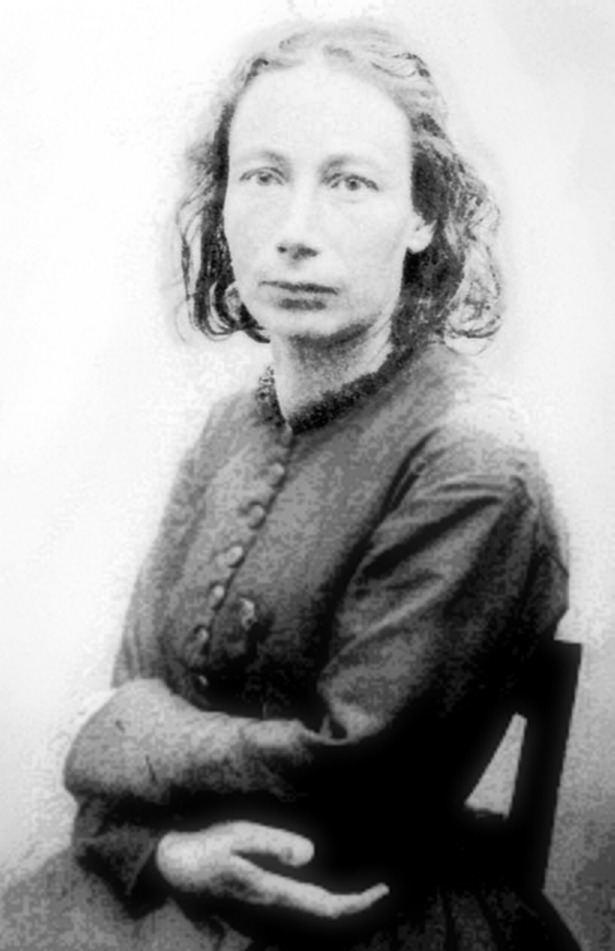 | ||
Born 29 May 1830 ( 1830-05-29 ) Vroncourt-la-Cote, France Books The Human Microbes, The New World Parents Etienne Charles Demahis, Marianne Michel | ||
Great lives paul mason on louise michel
Louise Michel ([lwiz miʃɛl]; 1830–1905) was a French anarchist, school teacher, medical worker, and important figure in the Paris Commune. She often used the pseudonym Clémence and was also known as the red virgin of Montmartre. Journalist Brian Doherty has called her the "French grande dame of anarchy." Yale historian John Merriman said: "She embraced the cause of women's rights, proclaiming that one could not separate 'the caste of women from humanity'".
Contents
- Great lives paul mason on louise michel
- Cup song coll ge louise michel chagny 71
- Biography
- Paris
- Deportation
- Return to France
- Quotes
- Publications
- In the press
- References
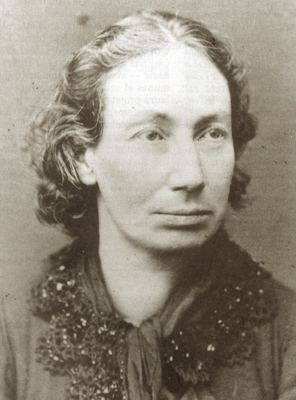
Cup song coll ge louise michel chagny 71
Biography
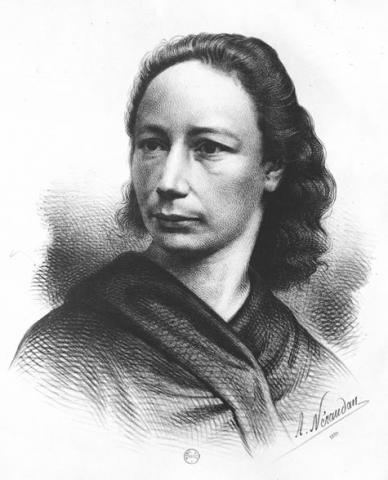
Louise Michel was born at the Château of Vroncourt (Haute-Marne) on 29 May 1830, the illegitimate daughter of a serving-maid, Marianne Michel, and the châtelain, Etienne Charles Demahis.
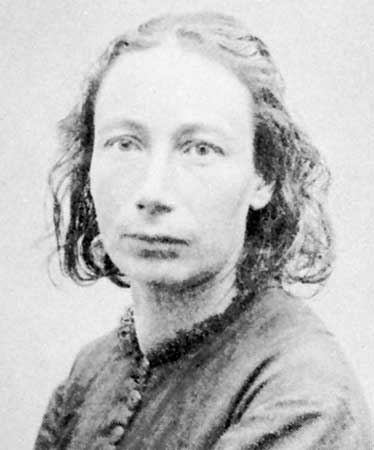
She was brought up by her mother and her father's parents near the village of Vroncourt-la-Côte and received a liberal education. She became interested in traditional customs, folk myths and legends. After her grandfather's death in 1850 she was trained to teach, but her refusal to acknowledge Napoleon III prevented her from serving in a state school. She became violently anti-Bonapartist, and is even said to have contemplated the assassination of Napoleon III. In 1866 she found her way to a school in the Montmartre quarter of Paris, where she threw herself ardently into works of charity and revolutionary politics. In 1866 a feminist group called the Société pour la Revendication du Droit des Femmes began to meet at the house of André Léo. Members included Paule Minck, Eliska Vincent, Élie Reclus and his wife Néomie, Mme Jules Simon, Caroline de Barrau, Maria Deraismes and Louise Michel. Because of the broad range of opinions, the group decided to focus on the subject of improving girls' education.
Paris
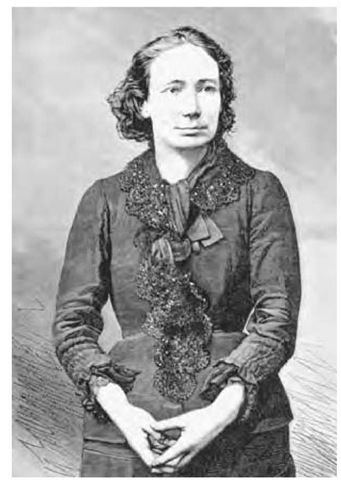
During the Paris Commune of 1871, Louise Michel was active as an ambulance woman treating those injured on the barricades. During the Siege of Paris in the Franco-Prussian War, she untiringly preached resistance against the Prussians. On the establishment of the Commune, she joined the National Guard. She offered to shoot Adolphe Thiers, President of the French Republic, and suggested the destruction of Paris as a form of vengeance against the victorious Prussians.
She was with the Communards, who made their last stand in the cemetery of Montmartre, and was closely allied with Théophile Ferré, who was executed in November 1871. Michel dedicated a moving farewell poem to Ferré, l’œillet rouge (The Red Carnation). Upon learning of this loss, Victor Hugo dedicated his poem Viro Major to Michel. This ardent attachment was perhaps one of the sources of the exaltation which marked Michel's career, and gave many handles to her enemies.
The text of the L’œillet rouge" is as follows:
In December 1871, Michel was brought before the 6th council of war, charged with offences including trying to overthrow the government, encouraging citizens to arm themselves, and herself using weapons and wearing a military uniform. Defiantly, she vowed never to renounce the Commune, and dared the judges to sentence her to death. Reportedly, Michel told the court, "Since it seems that every heart that beats for freedom has no right to anything but a little slug of lead, I demand my share. If you let me live, I shall never cease to cry for vengeance."
She spent twenty months in prison and was sentenced to deportation.
At this time the Versailles press gave her the name la Louve rouge, la Bonne Louise (the red she-wolf, the good Louise).
Deportation
Michel was loaded onto the ship Virginie on 8 August 1873, to be deported to New Caledonia, where she arrived four months later. Whilst on board, she became acquainted with Henri Rochefort, a famous polemicist, who became her friend until her death. She also met Nathalie Lemel, another figure active in the commune. Most likely, it was this latter contact that led Louise to become an anarchist. She remained in New Caledonia for seven years, refusing special treatment reserved for women. Befriending the local Kanaks, she attempted to educate them and, unlike others in the commune, took their side in the 1878 Kanak revolt. She is even said to have sent the ringleader of the rebellion, Ataï, a piece of her scarf.
The following year, she received authorisation to become a teacher in Nouméa for the children of the deported—among them many Algerian Kabyles ("Kabyles du Pacifique") from Cheikh Mokrani's rebellion (1871)—and later in schools for girls.
Return to France
In 1880, amnesty was granted to the Communards and Michel returned to Paris, her revolutionary passion undiminished. She gave a public address on the 21st of November, 1880 and continued her revolutionary activity in Europe, attending the anarchist congress in London in 1881, where she led demonstrations, spoke to huge crowds, and headed a libertarian school. Whilst in London, she also attended meetings at the Russell Square home of the Pankhursts where she made a particular impression on a young Sylvia Pankhurst.
She travelled throughout France, preaching revolution, and in 1883 she led a Paris mob which pillaged a baker's shop. For this she was condemned to six years' imprisonment, but was released in 1886, at the same time as Kropotkin and other prominent anarchists. After a short period of freedom, she was again arrested for making inflammatory speeches. She was soon liberated, but, hearing that her enemies hoped to intern her in a lunatic asylum, she fled to England in 1890. She returned to France in 1895, taking part in the agitation provoked by the Dreyfus affair in 1898, and from this time forward, she divided her time between conferences and stays with friends in London.
During a period of illness she visited Algeria.
She was touring France and lecturing on behalf of anarchist causes when she died in Marseille on January 10, 1905. Her funeral in Paris drew an immense crowd that did not fail to impress contemporaries. Numerous orators spoke.
Michel's grave is in the cemetery of Levallois-Perret, in one of the suburbs of Paris. The grave is maintained by the community. This cemetery is also the last resting place of her friend and fellow communard Théophile Ferré.
Quotes
Michel once joked, "We love to have agents provocateurs in the party, because they always propose the most revolutionary motions."
Publications
In the press
Michel was often discussed in the French press during her lifetime, as well as the English-language press in Britain and the United States. These are a sample of press caricatures of Michel:
